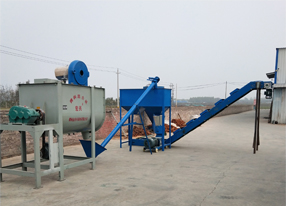poultry chicken cage
Dec . 03, 2024 17:41 Back to list
poultry chicken cage
The Role of Chicken Cages in Poultry Farming
Poultry farming, particularly chicken farming, is a vital sector of the agricultural industry, contributing significantly to global food production and economic stability. One of the most critical components of poultry farming is the housing system employed, particularly the use of chicken cages. As the demand for eggs and meat continues to rise, understanding the advantages and implications of chicken cages is essential for both farmers and consumers.
The Purpose of Chicken Cages
Chicken cages serve multiple purposes in poultry farming. Primarily, they provide a confined space that enhances biosecurity, reducing the risk of disease transmission among birds. In densely populated environments where disease can spread rapidly, cages help isolate individual chickens, thus minimizing the potential for outbreaks. Properly designed chicken cages also facilitate better management of the flock, making it easier for farmers to monitor health and wellbeing.
Cages can also optimize the use of space. In commercial poultry farming, where maximizing production is crucial, cages allow for a greater number of birds to be housed in a limited area. This high-density setup can lead to increased productivity without requiring additional land, which is particularly beneficial in regions where agricultural space is at a premium.
Comfort and Welfare Concerns
Despite their utility, the use of chicken cages has garnered significant criticism regarding animal welfare. Critics argue that traditional battery cages, which confine hens in small spaces, lead to a range of health issues and behavioral problems. Birds in such environments often exhibit signs of stress due to the lack of movement and stimulation, which is vital for their overall wellbeing. Furthermore, practices like beak trimming, commonly performed to prevent pecking in crowded conditions, raise ethical questions about the treatment of poultry.
In response to these concerns, some poultry farmers have shifted from conventional battery cages to enriched cages or cage-free systems. Enriched cages provide more space and include features like perches, nesting areas, and scratching pads, allowing chickens to express more natural behaviors. Cage-free systems, on the other hand, allow birds to roam freely in a barn-like environment but can require more significant space and resources to manage effectively.
poultry chicken cage

Economic Implications
The economic implications of chicken cage systems vary widely. For producers, the initial investment in cage systems can be substantial; however, the long-term benefits often outweigh these costs. Intensive systems can lead to reduced labor costs, as managing caged birds can be more straightforward than free-range systems. Moreover, the efficiency of feed conversion in caged environments can result in lower production costs, allowing farmers to remain competitive.
From a consumer perspective, the type of housing can influence market prices. Products from cage-free or free-range systems often carry a premium price due to the perceived higher welfare standards. As consumers become more concerned with the ethical implications of animal husbandry, purchasing decisions are increasingly influenced by how poultry are raised. Farmers who transition to more humane practices may find new market opportunities, though they must balance these with increased operational costs.
The Future of Poultry Farming
Looking ahead, the future of chicken cages and poultry farming as a whole is likely to be shaped by advances in technology and evolving consumer preferences. Animal welfare will continue to be a pivotal factor, driving innovation in housing systems. Improved genetics and feeding strategies will also play a role in enhancing productivity while addressing welfare concerns.
In addition, regulatory changes at local and global levels may influence cage use. As governments and organizations respond to public outcry against battery cages, there may be increased legislation promoting enriched environments or banning conventional cages altogether.
Conclusion
Chicken cages are a fundamental aspect of poultry farming, balancing the needs of increased productivity with the welfare of the birds. As the industry evolves, the challenges associated with traditional cage systems must be addressed through innovation and a commitment to improved animal welfare standards. Farmers, consumers, and policymakers must collaborate to ensure a sustainable future for poultry farming, one that respects the needs of animals while meeting the growing demands of the global population. Through responsible practices and a focus on innovation, the poultry industry can thrive and adapt to the changing landscape of agriculture.
-
Automatic Feeding Line System-Pan Feeder Nipple Drinker|Anping County Yize Metal Products Co., Ltd.
NewsJul.29,2025
-
Hot Sale 24 & 18 Door Rabbit Cages - Premium Breeding Solutions
NewsJul.25,2025
-
Automatic Feeding Line System Pan Feeder Nipple Drinker - Anping County Yize Metal Products Co., Ltd.
NewsJul.21,2025
-
Automatic Feeding Line System Pan Feeder Nipple Drinker - Anping County Yize Metal Products Co., Ltd.
NewsJul.21,2025
-
Automatic Feeding Line System - Anping Yize | Precision & Nipple
NewsJul.21,2025
-
Automatic Feeding Line System - Anping Yize | Precision & Nipple
NewsJul.21,2025






